
Lae: The Gateway to Papua New Guinea's Natural Wonders
Discover Lae, Papua New Guinea's vibrant gateway to lush rainforests, rich history, and cultural treasures. Explore serene botanical gardens, bustling markets, and WWII relics.
Lae, located on the northeastern coast of Papua New Guinea, is a bustling city known for its vibrant markets, rich history, and stunning natural beauty. As the second-largest city in the country, Lae serves as a major commercial hub and a gateway to the wonders of the Morobe Province. The city is surrounded by lush rainforests, majestic mountains, and pristine rivers, making it a paradise for nature lovers and adventure seekers. One of the city's most famous attractions is the Lae Botanical Gardens, a serene oasis showcasing a diverse collection of native flora. Visitors can stroll through the well-maintained paths, enjoying the vibrant colors and exotic scents of the local plants. Another must-visit is the Rainforest Habitat, a sanctuary that is home to a variety of native birds and animals, including the iconic cassowary and tree kangaroos. For history enthusiasts, Lae offers a glimpse into the past with its World War II relics and memorials. The Lae War Cemetery is a solemn site honoring the soldiers who lost their lives during the war. Additionally, the city is known for its colorful markets, where tourists can experience the local culture and purchase handmade crafts, fresh produce, and traditional artifacts. The bustling Lae Market is a sensory delight, filled with the sights, sounds, and flavors of Papua New Guinea.
Local tips in Lae
- Visit the Lae Market early in the morning to experience the freshest produce and avoid the crowds.
- Wear comfortable walking shoes as many attractions, including the Lae Botanical Gardens, require a fair amount of walking.
- Bring insect repellent, as the tropical climate can attract mosquitoes, especially in the rainforests.
- Carry local currency (Kina) as some smaller vendors and markets may not accept credit cards.
- Respect local customs and traditions when visiting cultural sites and interacting with locals.
Lae: The Gateway to Papua New Guinea's Natural Wonders
Lae, located on the northeastern coast of Papua New Guinea, is a bustling city known for its vibrant markets, rich history, and stunning natural beauty. As the second-largest city in the country, Lae serves as a major commercial hub and a gateway to the wonders of the Morobe Province. The city is surrounded by lush rainforests, majestic mountains, and pristine rivers, making it a paradise for nature lovers and adventure seekers. One of the city's most famous attractions is the Lae Botanical Gardens, a serene oasis showcasing a diverse collection of native flora. Visitors can stroll through the well-maintained paths, enjoying the vibrant colors and exotic scents of the local plants. Another must-visit is the Rainforest Habitat, a sanctuary that is home to a variety of native birds and animals, including the iconic cassowary and tree kangaroos. For history enthusiasts, Lae offers a glimpse into the past with its World War II relics and memorials. The Lae War Cemetery is a solemn site honoring the soldiers who lost their lives during the war. Additionally, the city is known for its colorful markets, where tourists can experience the local culture and purchase handmade crafts, fresh produce, and traditional artifacts. The bustling Lae Market is a sensory delight, filled with the sights, sounds, and flavors of Papua New Guinea.
When is the best time to go to Lae?
Iconic landmarks you can’t miss
Foodmart
Explore the vibrant flavors of Papua New Guinea at Foodmart, Lae's premier grocery store, bakery, and culinary destination.

Lae International Hotel
Experience comfort and convenience at Lae International Hotel, the perfect base for exploring the vibrant culture and beauty of Lae, Papua New Guinea.

Brian Bell Plaza
Discover the essence of Madang at Brian Bell Plaza, where shopping meets local culture in a vibrant atmosphere.
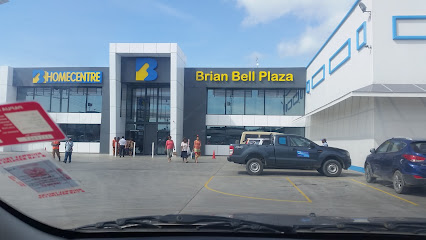
Lae Nadzab Airport AYNZ
Discover the beauty of Papua New Guinea through Lae Nadzab Airport, your gateway to adventure in Morobe Province.

Lae City Hotel
Discover the charm of Lae City Hotel, a premier hotel in Morobe Province offering comfort, convenience, and access to Papua New Guinea's stunning attractions.

Lae Botanic Gardens
Explore Lae Botanic Gardens, a lush sanctuary of tropical plants and vibrant landscapes in Papua New Guinea, perfect for relaxation and exploration.

Lae Yacht Club
Discover the Lae Yacht Club, a serene harbor destination in Papua New Guinea, blending dining, sailing, and stunning ocean views for unforgettable moments.

Crossroads Hotel
Experience comfort and local culture at Crossroads Hotel, your ideal base for exploring the vibrant city of Lae in Morobe Province.

Huon Gulf Hotel & Apartments
Discover comfort and convenience at Huon Gulf Hotel & Apartments, your perfect base in Lae, Morobe Province, for adventure and relaxation.

Bungaraya Restaurant
Indulge in authentic Chinese cuisine at Bungaraya Restaurant in Lae, where every dish tells a story of tradition and flavor.

Hotel Morobe
Discover the charm of Lae at Hotel Morobe, where comfort meets local culture in the heart of Papua New Guinea's vibrant landscape.

Papindo Lae Toptown Shopping Centre
Discover the heart of Lae at Papindo Lae Toptown Shopping Centre, a vibrant shopping hub offering local crafts, dining, and a unique cultural experience.

Wickid Chicken
Indulge in the delectable flavors of Wickid Chicken, a renowned restaurant in Lae, Morobe Province, where culinary excellence meets friendly service.

Rainforest Habitat
Discover the vibrant biodiversity and serene beauty of Rainforest Habitat in Lae, Morobe Province, a haven for nature lovers and adventure seekers.

Hardware Haus
Explore Hardware Haus in Lae, Morobe Province: Your go-to destination for quality tools and local craftsmanship in Papua New Guinea.

Unmissable attractions to see
Port Moresby Nature Park
Discover the lush beauty and diverse wildlife of Port Moresby Nature Park, a serene escape in Papua New Guinea's vibrant capital.

Lae Botanic Gardens
Discover the enchanting beauty and tranquil landscapes of Lae Botanic Gardens, a premier tourist attraction in Morobe Province, Papua New Guinea.

Lae Yacht Club
Experience the vibrant charm of Lae Yacht Club, a waterfront gem offering exquisite dining, stunning views, and engaging recreational activities in Morobe Province.

Rainforest Habitat
Explore the stunning natural beauty and diverse wildlife at Rainforest Habitat in Lae, Morobe Province, a must-see for nature lovers and adventurers.

McAdam National Park
Explore the lush landscapes and vibrant wildlife of McAdam National Park, a stunning national park in Papua New Guinea's Morobe Province.

DCA lookout
Discover the breathtaking views and serene atmosphere at DCA Lookout, a beautiful park in Lae, Papua New Guinea, perfect for relaxation and photography.
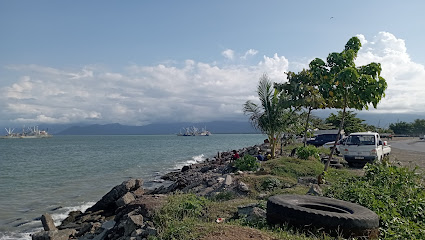
Amelia Earhart Memorial
Explore the Amelia Earhart Memorial, a tribute to the pioneering aviator, set in the lush landscapes of Lae, Morobe Province.

Sipaia
Experience the natural beauty and vibrant culture of Sipaia, a stunning tourist attraction in Lae, Papua New Guinea, perfect for nature lovers and cultural enthusiasts.

Lae War Cemetery
Explore Lae War Cemetery, a serene memorial in Papua New Guinea honoring the courage of WWII soldiers amidst beautiful landscapes.

Chinatown Market
Discover the vibrant culture and local flavors at Chinatown Market in Lae, where authentic experiences await every traveler.

SalaMata Haus (SalaMata Haus&Tours ).
Explore the beauty and culture of Asim Morobe Province at SalaMata Haus, where adventure and tradition come together in a stunning setting.

Lasanga Island Resort
Experience the natural beauty and tranquility of Lasanga Island Resort, a serene beach getaway in Morobe Province, Papua New Guinea.

WW2 Battle of Wau Memorial
Explore the serene WW2 Battle of Wau Memorial, a tribute to the valor of soldiers and a beautiful park for reflection in Morobe Province, Papua New Guinea.

Botanic Park
Explore the lush landscapes and tranquil atmosphere of Botanic Park in Lae, a perfect escape for nature lovers and peace seekers.

Sepic River Crocodile Festival
Discover the captivating Sepik River Crocodile Festival, a vibrant celebration of culture and tradition in Papua New Guinea's stunning East Sepik Province.

Essential places to dine
Foodmart
Explore diverse culinary delights at Foodmart in Lae—your one-stop destination for fresh produce, baked goods, and local specialties.

Bungaraya Restaurant
Experience the essence of Chinese cuisine at Bungaraya Restaurant in Lae - where every dish tells a story.

Wickid Chicken
Experience the delightful flavors of Papua New Guinea at Wickid Chicken - where every bite tells a story.

Phils Hotel
Experience Lae's culinary delights at Phils Hotel - where great food meets vibrant nightlife in Morobe Province.

Vanda Restaurant
Experience authentic Papua New Guinean cuisine at Vanda Restaurant in Lae – where every dish tells a story.

Big Rooster
Experience delicious fast food at Big Rooster in Lae – where local flavors meet classic favorites for every palate.
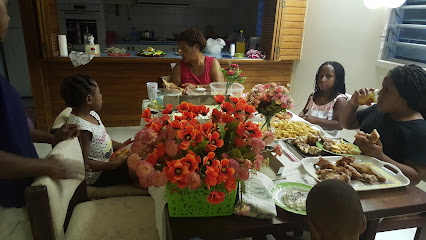
Ocean Restaurant
Experience authentic Asian flavors at Ocean Restaurant in Lae – where every dish tells a story.

Luluai's Italian Restaurant
Savor authentic Italian flavors at Luluai's Italian Restaurant in Lae - where every dish tells a story!
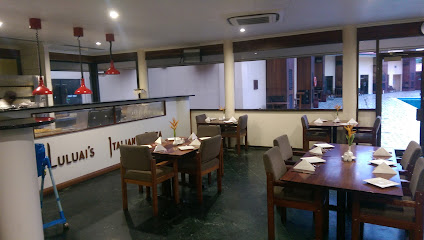
Lae Garden Restaurant
Experience the rich flavors of Papua New Guinea at Lae Garden Restaurant – where local meets international cuisine in a tranquil garden setting.

Zaffaran
Discover the rich flavors of authentic Indian cuisine at Zaffaran Restaurant in Lae, Morobe Province – where every meal tells a story.

BIG ROOSTER and BIG DONUTS
Experience delightful meals and sweet treats at Big Rooster and Big Donuts in Lae – where local flavors meet international favorites.

Fil Lae Food Hub
Experience a culinary journey at Fil Lae Food Hub - where local flavors meet global cuisine in the heart of Morobe Province.

Lae City Cafe & Restaurant
Experience authentic Papua New Guinean flavors blended with international cuisine at Lae City Cafe & Restaurant in Morobe Province.
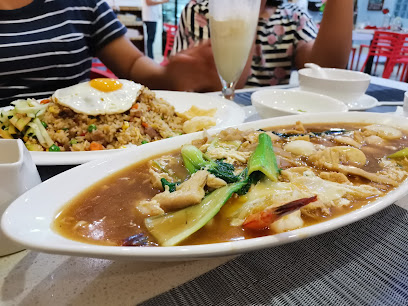
Hospital Restaurant
Discover the vibrant flavors of Papua New Guinea at Hospital Restaurant in Lae - where local meets global in an unforgettable dining experience.

Kokomo Restaurant (Lae International)
Discover the flavors of Western cuisine at Kokomo Restaurant in Lae – where every meal is an unforgettable experience.

Markets, malls and hidden boutiques
Foodmart
Discover the flavors of Lae at Foodmart, your one-stop grocery shop for fresh produce, local delicacies, and delightful baked goods.

Lae Main Market
Experience the vibrant culture and flavors of Papua New Guinea at Lae Main Market, a bustling hub for fresh produce and unique handicrafts.

BIGV Supermarket
Discover the vibrant BIGV Supermarket in Lae, a one-stop-shop for local and international products in Morobe Province.

LAE PLAZA
Explore Lae Plaza, Morobe's premier shopping destination, filled with diverse shops and delightful dining experiences for every traveler.

Jacks of PNG (Lae Branch)
Discover unique clothing and accessories at Jacks of PNG in Lae, where local culture meets modern fashion in a vibrant shopping experience.
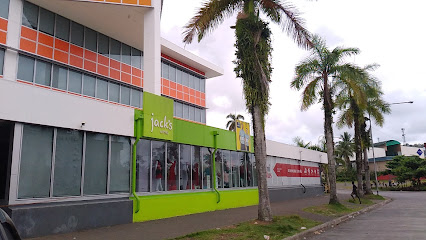
Kopiri Haus
Discover trendy women's fashion at Kopiri Haus in Lae, Morobe Province, where quality meets affordability in a spacious shopping environment.

CHM Lae
Explore the vibrant musical scene at CHM Lae, a treasure trove for music lovers in Morobe Province, offering instruments, records, and local talent showcases.

Chemica Lae Shop
Explore Chemica Lae Shop in Lae, Morobe Province for authentic home goods and unique crafts that showcase the rich culture of Papua New Guinea.

ADCO Mini Mart
Explore the rich flavors of Asia at ADCO Mini Mart, your ultimate destination for authentic Asian groceries in Lae, Morobe Province.

Laurabada Second Hand Store
Explore the Laurabada Second Hand Store in Lae for exceptional vintage finds and a sustainable shopping experience that supports local culture.

Lae Plaza
Explore Lae Plaza, a vibrant department store in Morobe Province, offering local crafts, international brands, and a glimpse into Papua New Guinea's culture.

Wantok Haus
Experience the heart of Lae at Wantok Haus, a local general store offering essential goods and a taste of Papua New Guinea's vibrant culture.

store
Discover Lae's finest bakery, offering artisanal breads and unique pastries that embody the local culture and culinary tradition of Papua New Guinea.

KUPA Trading
Explore KUPA Trading in Lae for quality home goods and local insights, making your stay in Papua New Guinea truly memorable.

Poinciana Market
Experience the vibrant colors and flavors of Poinciana Market in Lae, where local culture and community come alive through shopping and dining.

Essential bars & hidden hideouts
Bungaraya Restaurant
Experience authentic Chinese flavors at Bungaraya Restaurant in Lae, where every dish is crafted with passion and tradition.

Wickid Chicken
Discover authentic flavors at Wickid Chicken, Lae's top restaurant serving delectable chicken dishes and a vibrant atmosphere for all visitors.

Vanda Restaurant
Experience the rich culinary heritage of Lae at Vanda Restaurant, where local flavors meet international cuisine in a warm and inviting setting.
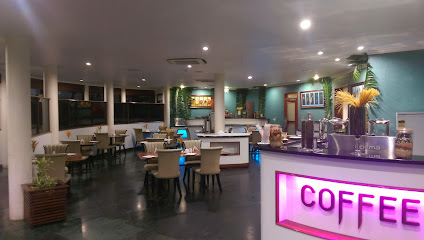
Ocean Restaurant
Savor the flavors of Asia at Ocean Restaurant, where exquisite cuisine meets stunning ocean views in Lae, PNG.

Lae Garden Restaurant
Discover the authentic flavors of Papua New Guinea at Lae Garden Restaurant, a culinary gem in Lae offering delightful local cuisine.

Lae City Cafe & Restaurant
Experience the culinary delights of Lae at Lae City Cafe & Restaurant, where local ingredients meet international flavors in a cozy atmosphere.

Club 99
Discover the energetic nightlife at Club 99 in Lae, where music, dancing, and local culture come together for an unforgettable experience.

Kokomo Restaurant (Lae International)
Discover Kokomo Restaurant in Lae for an exceptional Western culinary experience amidst vibrant local culture and hospitality.

Muse Night Club
Dive into the electrifying nightlife of Muse Night Club in Lae, Morobe Province, where vibrant music and unforgettable experiences await.

Bowling Club
Experience the lively nightlife at Lae's Bowling Club, where fun, friends, and unforgettable moments await in Morobe Province.

Yumi Bar
Discover the vibrant atmosphere of Yumi Bar in Lae, where local culture meets refreshing flavors in the heart of Morobe Province.

Pikus Tavern
Discover the vibrant spirit of Lae at Pikus Tavern, where local culture meets refreshing drinks in an inviting atmosphere.

Dragons Entertainmennt Venue
Discover the vibrant nightlife at Dragons Entertainment Venue in Lae, Morobe Province, where locals and tourists connect over drinks and entertainment.

Lae Bowls Kitchen
Experience the vibrant flavors of Papua New Guinea at Lae Bowls Kitchen, where local ingredients meet culinary creativity in every dish.

The Beer Garden
Experience the lively atmosphere of The Beer Garden in Lae, a must-visit bar for a taste of local Papua New Guinean culture and brews.
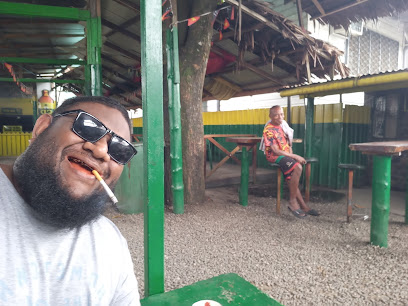
Local Phrases
-
- HelloGutpela dei
[goo-te-peh-lah dei] - GoodbyeGudbai
[good-bye] - YesYes
[yes] - NoNogat
[no-gaht] - Please/You're welcomePlis
[plees] - Thank youTenk yu
[tenk yoo] - Excuse me/SorrySori
[soh-ree] - How are you?Yu stap gut?
[yoo stap goot] - Fine. And you?Gut tru. Yu stap gut?
[goot troo. yoo stap goot] - Do you speak English?Yu save toktok long English?
[yoo sah-veh tohk-tohk long English] - I don't understandMi nogat save
[mee no-gaht sah-veh]
- HelloGutpela dei
-
- I'd like to see the menu, pleaseMi laik lukim menu, plis
[mee like loo-keem menu, plees] - I don't eat meatMi nogat kaikai kaukau
[mee no-gaht kai-kai kow-kow] - Cheers!Cheers!
[cheers] - I would like to pay, pleaseMi laik pai, plis
[mee like pie, plees]
- I'd like to see the menu, pleaseMi laik lukim menu, plis
-
- Help!Help!
[help] - Go away!Go away!
[go away] - Call the Police!Kolim Polis!
[koh-leem poh-lees] - Call a doctor!Kolim dokta!
[koh-leem dohk-tah] - I'm lostMi lusim rot
[mee loo-seem roht] - I'm illMi sik
[mee seek]
- Help!Help!
-
- I'd like to buy...Mi laik baim...
[mee like bah-eem] - I'm just lookingMi tasol lukluk
[mee tah-sohl look-look] - How much is it?Em i stap long moni?
[em ee stap long moh-nee] - That's too expensiveEm i moa olsem moni
[em ee moh-ah ol-sehm moh-nee] - Can you lower the price?Yu inap lusim pris?
[yoo ee-nahp loo-seem prees]
- I'd like to buy...Mi laik baim...
-
- What time is it?Hausait taim nau?
[how-sigh-t tah-eem now] - It's one o'clockEm i wan taim
[em ee wahn tah-eem] - Half past (10)Hausen pasten ten
[how-sen pah-sten ten] - MorningMonin
[moh-neen] - AfternoonApinun
[ah-pee-noon] - EveningEvenin
[eh-veh-neen] - YesterdayIstap long orait
[ees-tahp long oh-right] - TodayTudei
[too-day] - TomorrowTomoro
[toh-moh-roh] - 1Wan
[wahn] - 2Tu
[too] - 3Tri
[tree] - 4Fo
[foh] - 5Faiv
[fah-eev] - 6Sikis
[see-kees] - 7Seven
[seh-vehn] - 8Eit
[ayt] - 9Nain
[nine] - 10Ten
[ten]
- What time is it?Hausait taim nau?
-
- Where's a/the...?Em i stap we?
[em ee stap weh] - What's the address?Was istap long adras?
[wahs ee-stahp long ad-drahs] - Can you show me (on the map)?Yu inap soim mi long map?
[yoo ee-nahp soym mee long map] - When's the next (bus)?Nau bai i kam?
[now bai ee kahm] - A ticket (to ....)Wan tiket (long ....)
[wahn tee-keht long]
- Where's a/the...?Em i stap we?
History of Lae
-
Lae, located on the northern coast of Papua New Guinea, has been inhabited by indigenous communities for thousands of years. The region is home to the Austronesian-speaking Morobe people, who have a rich cultural heritage that includes traditional art, music, and dance.
-
In the late 19th century, Lae became part of the German New Guinea colony. The Germans established trading posts and began to exploit the region's natural resources. While Lae remained a relatively small settlement, it played a role in the broader colonial economy.
-
After World War I, the League of Nations granted Australia a mandate over the former German New Guinea, including Lae. Under Australian administration, Lae began to grow in importance as a commercial hub. The town benefitted from infrastructure developments, including a road linking it to the goldfields in Wau.
-
Lae gained significant historical importance during World War II. The town was occupied by Japanese forces in 1942, making it a strategic military base. The Battle of Lae in 1943 was a major Allied offensive to recapture the town. Australian and American forces successfully took Lae, marking a turning point in the Pacific War. The remnants of wartime infrastructure and relics can still be seen in the area.
-
After World War II, Lae underwent significant reconstruction. The town expanded rapidly and became a focal point for trade and industry in Papua New Guinea. When Papua New Guinea gained independence from Australia in 1975, Lae was well-positioned as a key economic center for the new nation.
-
Today, Lae is Papua New Guinea's second-largest city and serves as the capital of Morobe Province. The city is a bustling port and industrial center, known for its diverse population and vibrant cultural scene. Lae hosts the annual Morobe Show, a major event that showcases the region's agricultural and cultural diversity.
Lae Essentials
-
Lae is accessible primarily by air through the Lae Nadzab Airport, located about 40 kilometers from the city center. Major airlines such as Air Niugini and PNG Air operate flights from Port Moresby and other regional hubs to Lae. From the airport, you can take a taxi or a shuttle service to reach the city. Additionally, Lae is a significant port city, and there are occasional passenger ferries from nearby coastal towns.
-
Within Lae, public transport options include PMVs (Public Motor Vehicles), which are minibuses that run along set routes. Taxis are also available but should be booked through reputable companies for safety. Car rentals are an option for those looking to explore at their own pace, but driving can be challenging due to road conditions. Walking is feasible in central areas, but caution is advised after dark.
-
The official currency is the Papua New Guinean Kina (PGK). Credit cards are accepted in major hotels, some restaurants, and larger stores, but cash is essential for smaller businesses and local markets. ATMs are available in the city, but it is advisable to carry some cash, especially when traveling outside urban areas.
-
While Lae is generally safe for tourists, certain areas are known for higher crime rates, particularly targeting tourists. It is recommended to avoid settlements and industrial areas at night. Always use registered taxis and avoid walking alone after dark. Keep your belongings secure and be cautious in crowded places.
-
In case of an emergency, dial 111 for police, ambulance, or fire services. The Angau Memorial Hospital is the main medical facility in Lae. It is advisable to have comprehensive travel insurance that includes medical evacuation. For minor issues, there are pharmacies in the city where you can purchase over-the-counter medications.
-
Fashion: Do dress modestly and conservatively, especially outside urban areas. Avoid revealing clothing. Religion: Do respect local customs and traditions, and seek permission before taking photographs in religious sites. Public Transport: Do be courteous and allow elderly passengers to sit. Don't eat or drink on public transport. Greetings: Do greet people with a handshake. When addressing locals, use titles and surnames. Eating & Drinking: Do try local foods and accept hospitality graciously. Don't refuse food or drink offered by locals, as it is considered impolite.
-
To experience Lae like a local, visit the Main Market where you can buy fresh produce and local crafts. Engage with locals, who are often eager to share stories about their culture and history. Don't miss out on visiting the Rainforest Habitat and the Lae War Cemetery. For a unique experience, explore the nearby Huon Gulf and its beautiful coastal scenery.
Trending Landmark in Lae
Nearby Cities to Lae
-
Things To Do in Goroka
-
Things To Do in Madang
-
Things To Do in Port Moresby
-
Things To Do in Mount Hagen
-
Things To Do in Buka
-
Things To Do in Kimbe
-
Things To Do in Wewak
-
Things To Do in Alotau
-
Things To Do in Kavieng
-
Things To Do in Rabaul
-
Things To Do in Kokopo
-
Things To Do in Vanimo
-
Things To Do in Arawa
-
Things To Do in Taro Island
-
Things To Do in Gizo









